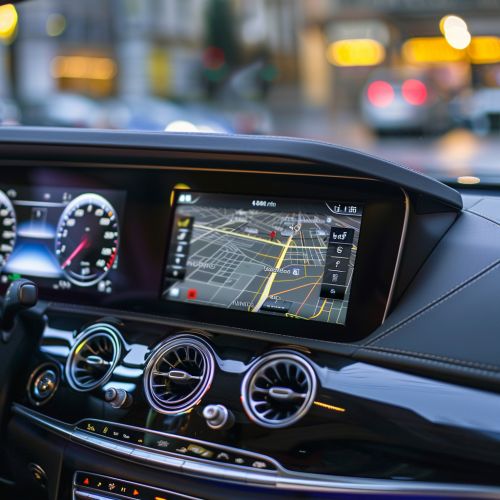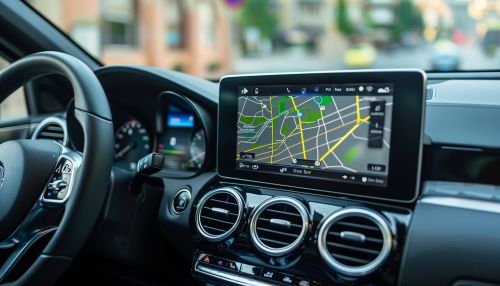Telematics
Introduction
Telematics is a field that merges telecommunications and informatics to provide various services such as navigation, safety, security, and entertainment in vehicles. The term originated from the French word "télématique," which was coined by Simon Nora and Alain Minc in their 1978 report to the French government on the computerization of society. The term has evolved over the years to encompass a broad range of applications, primarily in vehicles and fleet management.


History and Development
The concept of telematics began with the development of telecommunications and informatics, which were initially separate fields. The convergence of these two fields led to the creation of telematics. The first applications of telematics were in the field of military and space exploration, where it was used to transmit data over long distances. The development of the Global Positioning System (GPS) in the 1970s by the United States Department of Defense significantly boosted the growth of telematics.
Applications
Vehicle Telematics
Vehicle telematics is one of the most common applications of telematics. It involves the use of telecommunications and informatics in vehicles, for purposes such as navigation, safety, security, and entertainment. Vehicle telematics systems typically consist of a vehicle tracking device installed in a vehicle that transmits data to a central server over a cellular network. The data can then be accessed by the vehicle owner or a fleet manager via a web-based interface.
Fleet Management
Telematics plays a crucial role in fleet management, where it is used to monitor and manage a fleet of vehicles. Fleet management systems use GPS technology to track the location of vehicles and transmit data such as speed, fuel consumption, and vehicle diagnostics to a central server. This data can be used to optimize fleet operations, reduce costs, and improve driver safety.
Insurance Telematics
Insurance telematics, also known as usage-based insurance (UBI), involves the use of telematics devices to monitor driving behavior for insurance purposes. The data collected can be used to calculate insurance premiums based on the driver's behavior, such as speed, braking, and time of driving. This allows insurance companies to offer personalized insurance policies and incentivize safe driving.
Technology
Telematics technology involves the use of various technologies, including GPS, cellular networks, and onboard diagnostics (OBD).
GPS
The Global Positioning System (GPS) is a satellite-based navigation system that provides geolocation and time information to a GPS receiver anywhere on or near the Earth. In telematics, GPS is used to track the location of vehicles and transmit this data to a central server.
Cellular Networks
Cellular networks are used in telematics to transmit data from the vehicle to a central server. The data can include location information, vehicle diagnostics, and driver behavior data. The use of cellular networks allows for real-time transmission of data, enabling features such as live tracking and instant alerts.
Onboard Diagnostics (OBD)
Onboard diagnostics (OBD) is a vehicle's self-diagnostic and reporting capability. OBD systems give the vehicle owner or a repair technician access to the status of various vehicle subsystems. In telematics, OBD data can be transmitted to a central server for analysis and reporting.
Future of Telematics
The future of telematics is expected to be shaped by advancements in technology and increasing demand for connected vehicles. With the advent of technologies such as 5G, Internet of Things (IoT), and artificial intelligence (AI), telematics is expected to become more advanced and offer more features. For instance, the use of AI in telematics can enable features such as predictive maintenance, where the system can predict potential issues with the vehicle and alert the driver or fleet manager in advance.
